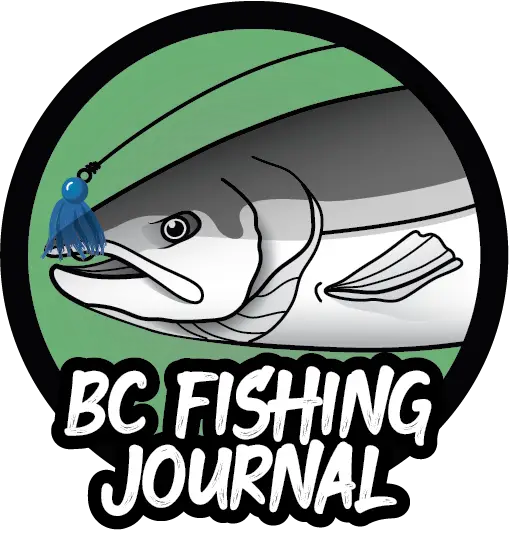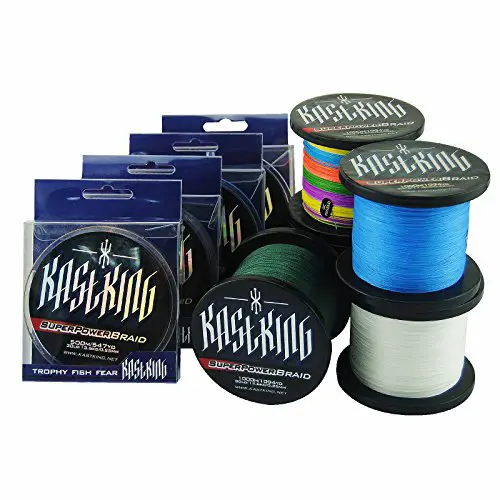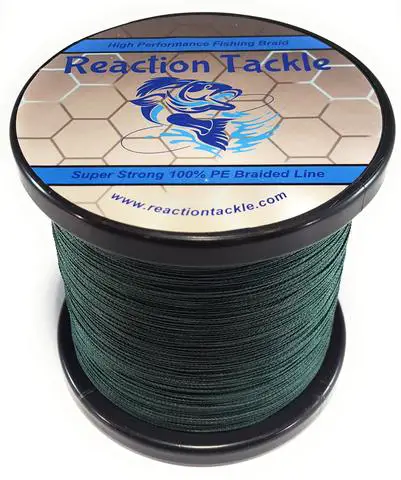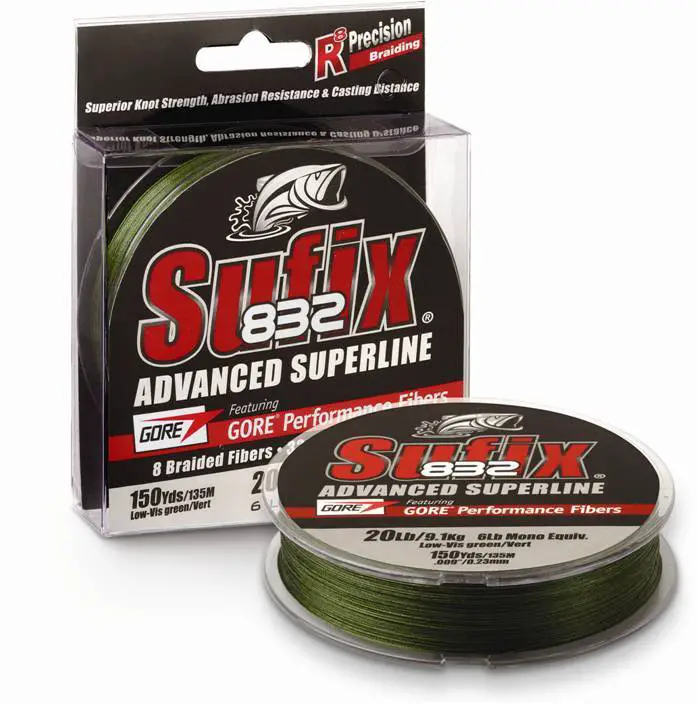
Best Braided Fishing Line Comparisons and Reviews
This article I’ve included the Pros/Cons of braid, when to use braid vs. mono/fluorocarbon, how to connect braid with other types of lines and other general tips. Additionally, I cover my recommended braids with comparisons and reviews. With so many braid options on the market the best line really comes down to preference and fishing application. I hope this guide is helpful in providing any/all things related to braided fishing line!
What is braided fishing line?
Braided line is micro strands interwoven into a single strand of line. The strands are made primarily from polyethylene fibers but manufacturers are also trying combinations of different fibers (hydrophobic gore, dacron, spectra, micro-dyneema and many more). Braid is typically composed of 4 to 8 strands, although some manufacturers are beginning to create 12 and 16 strands. Another term often used for the number of strands is “carrier”, for example, if a braided line contains eight strands it will be called “eight-carrier” braid. The multiple strands in braid make it different than monofilament or fluorocarbon lines which are made of one fiber of plastic.
Pros and Cons of Braided Fishing Line
Pros |
Cons |
| Smaller diameter than mono / fluorocarbon | Highly visible in water |
| Good resistance to abrasion | Challenging to tie knots |
| Floats on top the water | More expensive than typical monofilament |
| Great line sensitivity for light bites | Difficult to cut / remove snag |
| Low line memory | Line can cut into reel spool or rod line guides |
| Does not stretch | Does not stretch (depends on fishing application) |
| Stronger breaking strength (lb rating) | |
| Casts easier & further |
Braided Line to Equivalent Monofilament – Diameter & Strength
| Braided Line Strength | Braided Line Diameter | Equivalent Monofilament Strength |
| 8lb | 0.13mm (0.005”) | 1lb (4kg) |
| 10lb | 0.15mm (0.006”) | 2lb (5kg) |
| 20lb | 0.23mm (0.009”) | 6lb (9kg) |
| 30lb | 0.28mm (0.011”) | 8lb (14kg) |
| 50lb | 0.36mm (0.014”) | 12lb (23kg) |
| 100lb | 0.46mm (0.018”) | 20lb (45kg) |
Where Braided Line Performs Best (outperforming Monofilament & Fluorocarbon)
Each fishing location and situation presents different challenges. In determining a fishing line for one situation can be extremely subjective, so these guidelines should be taken from a general standpoint.
Dirtier water clarity / conditions
One of the drawbacks to braided line is how visible it is underwater. When fishing in muddy water (or lower visibility water) braided line can be an excellent choice as the fish won’t see it and be as easily spooked. In gin clear water a fluorocarbon or monofilament line would likely be a better choice. That said, some fish are more aggressive than others no matter what the water clarity may be, so knowing the species and water you’re fishing is important. This is an important point, because the better you understand the different water conditions and aligning your fishing lines the more success you’ll have.
Heavy cover, foliage or structure
Braid is is ideal when pitching or dropping weighted lures into thick foliage and wrestling big fish out of heavy cover. For example, chucking weighted weedless plastics into thick lilypads for bass, your 2lb bass may feel like a 12lb bass with all the foliage connected to the line/fish. Braided line shines in these situations not only for the heavier line strength but also for reduced abrasion to your line.
Top water
Fishing top water lures like frogs, poppers, spooks, whopper ploppers, shallow cranks/swim baits and many more work great with braided line because it floats and with no stretch can allow you to really move/activate these baits. Additionally, braid cuts through water better than other lines for less drag. There are monofilament lines that float as well, so perhaps looking at water clarity and surroundings (foliage, wood, open water, etc) should impact what line to choose.
Sensitive bite
Braid has no stretch so any action on a lure is easily felt by the angler. No stretch is a double edged sword as the fish will also quickly detect your lure with a tight line, whereas monofilament has is more forgiving. When you are watching for those light bites with braid, I’d recommend using a rod with a very sensitive tip (quick flex at the top) which will provide some play for the lure.
Beach fishing
Braid is very castable! The narrow line diameter weighs less than the equivalent monofilament, that enables you to bomb your lures out there. Casting distance is a huge advantage when you’re fishing from shore. Additionally, on the beach you may encounter high abrasion terrains (sharp rocks, coral, etc) and braid holds up to this punishment much better than monofilament or fluorocarbon.
Deep sea fishing
Bottom fishing or jigging in the Ocean is ideal for a no stretch line. When you’re jigging in deep water you want each up/down arm movement to have the maximum action on the lure, when fishing deep the low stretch and small diameter line provides a big benefit. Additionally in the open ocean having a lot of line on your reel for a big fish is important, and as we’ve already covered the small diameter of braid enables you to put on 2×3 times more line on the spool.
How to Connect Braid to Fluorocarbon/Monofilament Lines
If you have a reel spooled up with braided line but need the low visibility of fluorocarbon/monofilament to tie on your bait or lure, you can connect the two lines together! The fluorocarbon or monofilament line is essentially a leader connected to your braided mainline, this is called a “shock leader”. The shock leader can be anywhere from 12 inches to 6 feet, it depends on the fishing application. There are many ways to attach two different lines together, I recommend using either the double uni knot or a barrel swivel. When tying these two different lines together you have to ensure the knot is done correctly as the braid may cut through or compromise the mono/fluoro line (and braid always wins the “knot battles”). That said, if you don’t feel comfortable tying a proper double uni knot, connecting both lines to a barrel swivel is a great alternative. I also like the barrel swivels in that they swivel and reduce line twists on your shock leaders.
How to Reuse Braided Line
Did you know that you can reuse your braided line? Let me explain. For example, let’s say you spool up a reel with 150 yards of new braided line onto your favorite spinning reel. You fish this line all summer long and at the end of the season you begin to notice the line color is starting to fade, it has abrasions or is flat/compromised. Additionally, you’ve had a number of tangles and snags throughout the year where you had to cut off portions of your line leaving you with closer to 125 yards of line. These are all common problems that happen to the best of us. Anyway, at the end of the season here are a few tips to consider:
Remove the worn or damaged line: Cut off the “used line”, this portion is typically the length of your furthest cast (aka. the line that actually came off the reel). The problem with this is if you’ve only spooled 150 yards, you may need to cut off half your line and that’s not enough to fish with.
Additional Tip: You could connect two shorter lines together using a double uni knot.
Replace with new line: Thank you, Captain Obvious. Remove all the line from the reel and replace with new line.
Additional Tip: Keep the initial braid that didn’t ever come off the reel for backing.
Reuse the same full length of braid: As mentioned, braided line has low memory which means it doesn’t hold its twists/coils as it comes off and onto the spool. This low memory will enable you to remove all the braid off the spool and respool it. With the important note of ensuring you put the “used line” on the spool first, so the extra line that never (or rarely) came off the spool will now be the line you’re fishing with on the front end.
Additional Tip: The easiest way to accomplish this is to use two reels, transferring the braid from one reel to another. Open the bale of the reel with the old braid, tie the old braid line onto the new spool and reel the braid onto the new spool. It can be done without two spools but is much trickier as you have to pull all the line off and still have access to both ends. Braid is not cheap, so consider this tip the next time you’re ready to change out your braided line.
Best Braided Fishing Line Comparisons and Reviews
Key Features
- Made with ultra-strong braided Spectra Fiber
- Treated with Enhanced Body technology for a round and sensitive line
- Offers a variety of Strength/Weights (3lb-250lb) and Lengths (150-3000 yards)
Key Features
- Great price point!
- Extremely small diameter line as compared to other brands
- Great abrasion resistance
- Offer a variety of line strengths and lengths (6lb to 150lb)
Key Features
- Less visibility than the other braids
- Higher strength rating than comparable braids
- Offers lines with weights (6 lb – 100 lb) and lengths (1250-500 yards)
Key Features
- Great price point!
- Color lock technology to maintain line color and less bleeding
- Offers a variety of weights (10 lb – 100 lb) and Lengths (150 – 1500 yards)
Key Features
- 8 Fibers construction (7 Dyneema + 1 GORE Performance Fiber)
- One of the smallest diameter amongst comparable braids
- Offers a variety of Weights (6 lb – 80 lb) and Lengths (150-300 yards)
Key Features
- The first translucent superline (Ultra low-visibility line)
- Constructed with Dyneema PE fibers
- Offers a variety of weights (2 lb – 30lb) and Lengths (125 – 1500 yards)
Conclusion
Braid is an incredible step forward in the fishing world when it comes to fishing line. Understanding when and how to use it is key. I hope this post helped your knowledge of braided line and increases your fishing preparation on/off the water. I’m continually testing and researching new lines to keep this guide up to date. If you have any other lines that you’d recommend I’d love to hear from you. Please leave a comment and let me know! Tight Lines! Jesse
About the Author
















